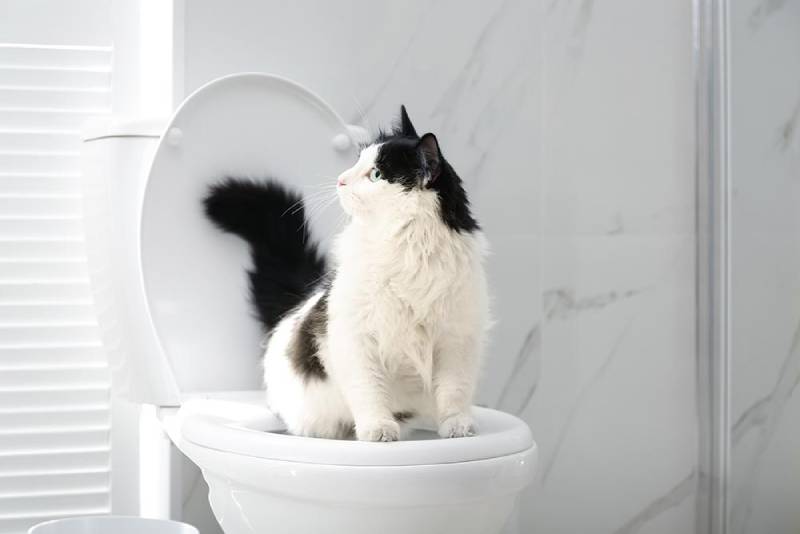Your Value of Proper Disposal of Animal Waste
Your Value of Proper Disposal of Animal Waste
Blog Article
On this page in the next paragraphs you can discover a lot of worthwhile news concerning Don't Flush Your Pets Poo Down The Loo, Vet Warns.

When it involves disposing of waste, especially animal waste, many individuals frequently turn to the hassle-free choice of flushing it down the toilet. Nevertheless, this seemingly very easy option can have severe consequences for the setting and public health. In this short article, we'll discover why flushing animal waste down the bathroom is a negative idea and provide alternative approaches for appropriate disposal.
Intro
Appropriate waste disposal is crucial for keeping environmental sustainability and public health. While it may appear safe to flush animal waste down the commode, it can result in different concerns, both for the setting and human well-being.
Dangers of flushing pet waste
Ecological influence
Purging pet waste presents unsafe microorganisms and pathogens into waterways, which can negatively influence aquatic environments. These virus can infect water resources and damage aquatic life, interfering with delicate ecological communities.
Public health worries
Animal waste consists of harmful microorganisms such as E. coli and Salmonella, which can pose severe wellness dangers to human beings. Flushing pet waste down the bathroom can contaminate water materials, resulting in the spread of diseases and infections.
Alternatives to flushing
Rather than purging pet waste down the commode, there are several alternative disposal methods that are more environmentally friendly and hygienic.
Composting
Composting animal waste is an environmentally friendly means to dispose of it. By composting, raw material is broken down into nutrient-rich dirt, which can be utilized to fertilize gardens and plants.
Garbage dump disposal
Disposing of pet waste in a land fill is an additional option. While not as environmentally friendly as composting, it is a safer alternative to flushing, as it avoids the contamination of water resources.
Family pet waste disposal systems
There are customized pet waste disposal systems readily available that securely and hygienically take care of pet waste. These systems commonly use enzymes to break down waste and get rid of smells.
Actions to proper pet waste disposal
To guarantee proper disposal of animal waste, follow these actions:
Scooping and bagging waste
On a regular basis scoop and bag animal waste making use of biodegradable bags. This prevents waste from contaminating the setting.
Using designated waste containers
Dispose of bagged animal waste in marked waste bins, such as compost bins or garbage dump bins. Avoid flushing it down the commode in all costs.
Cleaning up litter boxes and family pet areas regularly
On a regular basis clean can and pet areas to prevent the accumulation of waste and germs. Usage pet-safe cleansing items to preserve hygiene.
Benefits of appropriate disposal methods
Embracing correct disposal methods for animal waste supplies numerous benefits:
Decreased environmental pollution
Correct disposal approaches lower the danger of environmental pollution, shielding waterways and ecosystems from contamination
Lessened danger of water contamination.
By avoiding flushing pet waste down the toilet, the threat of water contamination is considerably reduced, securing public health.
Enhanced cleanliness and hygiene
Correct disposal methods promote far better hygiene and hygiene, developing a much safer atmosphere for both human beings and pets.
Verdict
In conclusion, purging animal waste down the commode is unsafe to the environment and public health. By adopting alternative disposal approaches and complying with proper waste management methods, we can lessen the negative impact of animal waste and add to a cleaner, much healthier earth.
What To Do With Dog Poo – The Do's And Don'ts Of Disposing Of Faeces
Dog poo bins
Some councils provide dedicated dog waste bins in popular dog-walking areas that can take dog poo that has been bagged but you can legally dispose of dog waste in any public litter bin, as long as it is securely bagged. This also applies to your wheelie bin at home.
Do not flush
Water companies do not recommend flushing dog faeces down the toilet because certain parasites can survive the water processing treatment and are potentially harmful to humans. You should also never consider flushing dog poo that has been bagged down the toilet as the bags will not break down and instead create severe blockages in the sewage system.
In the woods
The Forestry Commission promotes a ‘stick and flick’ method for dealing with waste in the woods. This means finding a stick and using it to flick any poo from off the path so that it is out of the way of other walkers. You could also bury it as long as it is not in an area where there might be livestock.
Livestock
Parasites found in dog poo can be transmitted to livestock if they inadvertently eat infected faeces that has been left on grazing land. This could result in the death of sheep or abortion in cattle so you should always make sure you pick up your dog’s waste in fields where livestock could be present.

On a regular basis clean can and pet areas to prevent the accumulation of waste and germs. Usage pet-safe cleansing items to preserve hygiene.
Benefits of appropriate disposal methods
Embracing correct disposal methods for animal waste supplies numerous benefits:
Decreased environmental pollution
Correct disposal approaches lower the danger of environmental pollution, shielding waterways and ecosystems from contamination
Lessened danger of water contamination.
By avoiding flushing pet waste down the toilet, the threat of water contamination is considerably reduced, securing public health.
Enhanced cleanliness and hygiene
Correct disposal methods promote far better hygiene and hygiene, developing a much safer atmosphere for both human beings and pets.
Verdict
In conclusion, purging animal waste down the commode is unsafe to the environment and public health. By adopting alternative disposal approaches and complying with proper waste management methods, we can lessen the negative impact of animal waste and add to a cleaner, much healthier earth.
What To Do With Dog Poo – The Do's And Don'ts Of Disposing Of Faeces
Dog poo bins
Some councils provide dedicated dog waste bins in popular dog-walking areas that can take dog poo that has been bagged but you can legally dispose of dog waste in any public litter bin, as long as it is securely bagged. This also applies to your wheelie bin at home.
Do not flush
Water companies do not recommend flushing dog faeces down the toilet because certain parasites can survive the water processing treatment and are potentially harmful to humans. You should also never consider flushing dog poo that has been bagged down the toilet as the bags will not break down and instead create severe blockages in the sewage system.
In the woods
The Forestry Commission promotes a ‘stick and flick’ method for dealing with waste in the woods. This means finding a stick and using it to flick any poo from off the path so that it is out of the way of other walkers. You could also bury it as long as it is not in an area where there might be livestock.
Livestock
Parasites found in dog poo can be transmitted to livestock if they inadvertently eat infected faeces that has been left on grazing land. This could result in the death of sheep or abortion in cattle so you should always make sure you pick up your dog’s waste in fields where livestock could be present.

I came across that blog entry on Should you flush animal waste down the toilet when surfing around the search engines. Feel free to take a moment to distribute this article if you enjoyed reading it. I treasure your readership.
Call Today Report this page